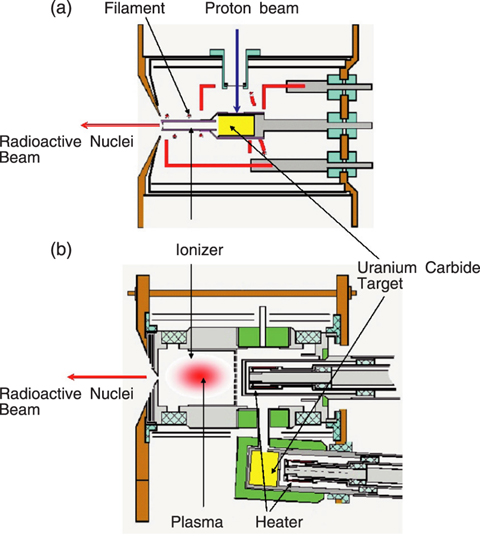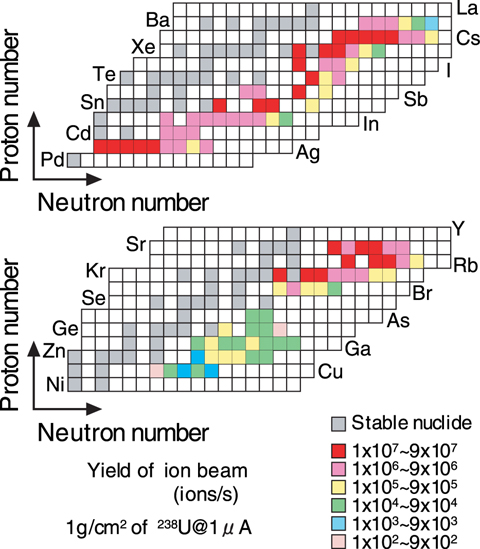
Fig.14-3 Schematic view of Ion sources for Radioactive Nuclei

Fig.14-4 Beam intensities of the nuclei successfully ionized
We are developing ion sources to ionize radioactive nuclei, which do not occur naturally, for acceleration by a radioactive nuclei beam accelerator in the facility of the JAEA tandem accelerator. Radioactive nuclei of about 40 elements and 400 nuclei are produced at a time when uranium is bombarded by a proton beam. For an effective acceleration of these nuclei, the diffusion/evaporation should be fast from the uranium target and ionization at once, because most of these nuclei are in minute amounts and short-lived, as half-life is less than a few seconds. Therefore, we developed a unique uranium target and two types of ion sources for radioactive nuclei that are considered to be chemical properties of these elements.
The more the weight of the uranium is increased, more radioactive nuclei in the target was obtained. However the diffusion/evaporation of the fission products becomes slower if a highly-condensed target is made. In addition, the target should be raised to a high temperature to accelerate the speed of the diffusion/evaporation. Therefore, we made a uranium carbide target, which has a chemical stability at a high-temperature on a graphite fiber, so that the amount of uranium (~800 mg/cm2) was maintained. This uranium target has a large surface area and fast diffusion/evaporation speed of the fission products.
High ionization efficiency is required for the ion source for radioactive nuclei that are produced in minute amounts. It is impossible to ionize every element with one type of ion source produced in the reaction of proton induced uranium fission. Therefore, two types of integrated uranium target-ion source systems were developed that are considered to be chemical properties of elements. It is suitable that the surface ionization ion source (Fig.14-3 (a)) to ionize alkali, alkaline-earth and rare-earth elements that have a low ionization potential. We developed an ion source that could operate at 2300°C to obtain high ionization efficiency.
The low-pressure arc-discharge ion source (Fig.14-3(b)) is suitable for the ionization of gaseous elements, Kr and Xe, and volatile elements such as Sn, In, Ag and Cu. We built a heater to maintain a high-temperature of the uranium target on the ion source. This modification made it possible to efficiently transfer radioactive nuclei from the target to the ionization chamber.
Using these ion sources, 105 isotopes in 19 elements produced in the proton induced fission of uranium have been provided to the radioactive nuclei beam accelerator with maximum yield of 107 ions/s as shown in Fig.14-4. With these radioactive nuclei beams, advances are expected in the studies of synthesis of elements in the universe and structural analysis of materials.